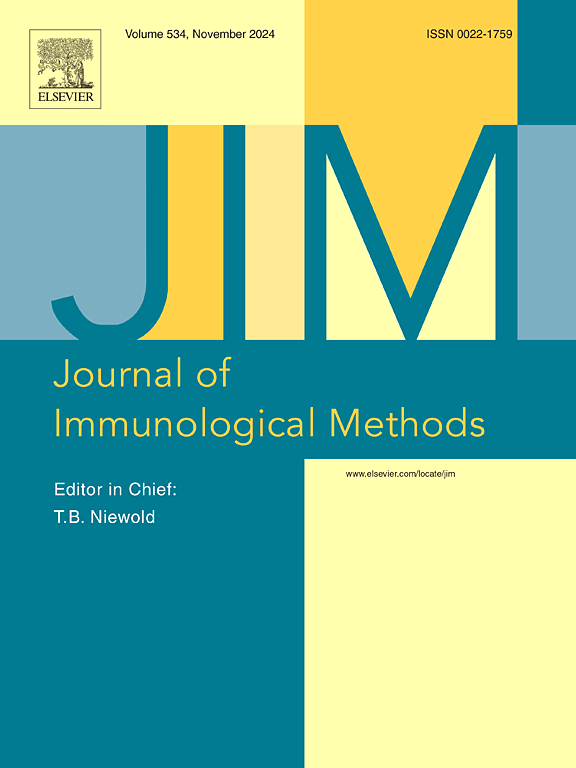Target tolerance improvement of the immunogenicity assay developed for analysing samples from clinical trials of RGB-14, a proposed biosimilar to Prolia/Xgeva
IF 1.6
4区 医学
Q4 BIOCHEMICAL RESEARCH METHODS
引用次数: 0
Abstract
An immunogenicity assay was developed to support the clinical program of RGB-14, a proposed biosimilar to Prolia/Xgeva. The ADA assay was successfully validated following current guidelines and white papers. The validation included an assessment of target (RANKL) interference, and the assay passed the test up to a 30 pg/mL RANKL level. This concentration was anticipated to be the maximum level present in clinical samples. Despite the successful validation, most of the analysed samples from the RGB-14 Phase I clinical trial yielded false-positive results for anti-denosumab antibodies. The investigation concluded that unexpectedly high levels of RANKL were present in the samples and caused interference in the assay. Consequently, the assay was re-developed by adding target-specific reagent, eliminating acid dissociation step and doubling the assay dilution to enhance target tolerance to 10,000 pg/mL RANKL, a requirement for clinical sample testing. The re-developed assay underwent successful validation, and the samples from the clinical trials of RGB-14 were subsequently analysed with the improved assay. The article outlines a strategy for enhancing the target (RANKL) tolerance of the ADA assay. It also underscores the importance of monitoring clinical sample analysis results, even if a validated assay is used for sample testing, as clinical samples may differ from the spiked samples prepared for validation. If unexpected results are obtained, an investigation should be initiated, and the assay should be improved if needed to ensure the reliability of the results.

RGB-14 (Prolia/Xgeva的拟制生物类似物)的临床试验样品的免疫原性分析的靶标耐受性提高
为了支持RGB-14 (Prolia/Xgeva的拟议生物仿制药)的临床项目,开发了一项免疫原性试验。ADA试验按照现行指南和白皮书成功验证。验证包括对靶标(RANKL)干扰的评估,该分析通过了高达30 pg/mL RANKL水平的测试。该浓度预计是临床样品中存在的最大水平。尽管成功验证,但大多数来自RGB-14 I期临床试验的分析样本产生了抗denosumab抗体的假阳性结果。调查得出的结论是,样品中存在出乎意料的高水平RANKL,并对分析造成干扰。因此,通过添加目标特异性试剂,消除酸解离步骤并将检测稀释度加倍以提高靶标耐受性至10,000 pg/mL RANKL,重新开发了该检测方法,这是临床样品检测的要求。重新开发的分析方法经过了成功的验证,RGB-14临床试验的样品随后用改进的分析方法进行了分析。本文概述了一种提高ADA检测的靶(RANKL)耐受性的策略。它还强调了监测临床样品分析结果的重要性,即使用于样品检测的是经过验证的分析方法,因为临床样品可能与为验证而准备的加标样品不同。如果得到意想不到的结果,应开始调查,如果需要,应改进分析以确保结果的可靠性。
本文章由计算机程序翻译,如有差异,请以英文原文为准。
求助全文
约1分钟内获得全文
求助全文
来源期刊
CiteScore
4.10
自引率
0.00%
发文量
120
审稿时长
3 months
期刊介绍:
The Journal of Immunological Methods is devoted to covering techniques for: (1) Quantitating and detecting antibodies and/or antigens. (2) Purifying immunoglobulins, lymphokines and other molecules of the immune system. (3) Isolating antigens and other substances important in immunological processes. (4) Labelling antigens and antibodies. (5) Localizing antigens and/or antibodies in tissues and cells. (6) Detecting, and fractionating immunocompetent cells. (7) Assaying for cellular immunity. (8) Documenting cell-cell interactions. (9) Initiating immunity and unresponsiveness. (10) Transplanting tissues. (11) Studying items closely related to immunity such as complement, reticuloendothelial system and others. (12) Molecular techniques for studying immune cells and their receptors. (13) Imaging of the immune system. (14) Methods for production or their fragments in eukaryotic and prokaryotic cells.
In addition the journal will publish articles on novel methods for analysing the organization, structure and expression of genes for immunologically important molecules such as immunoglobulins, T cell receptors and accessory molecules involved in antigen recognition, processing and presentation. Submitted full length manuscripts should describe new methods of broad applicability to immunology and not simply the application of an established method to a particular substance - although papers describing such applications may be considered for publication as a short Technical Note. Review articles will also be published by the Journal of Immunological Methods. In general these manuscripts are by solicitation however anyone interested in submitting a review can contact the Reviews Editor and provide an outline of the proposed review.

 求助内容:
求助内容: 应助结果提醒方式:
应助结果提醒方式:


